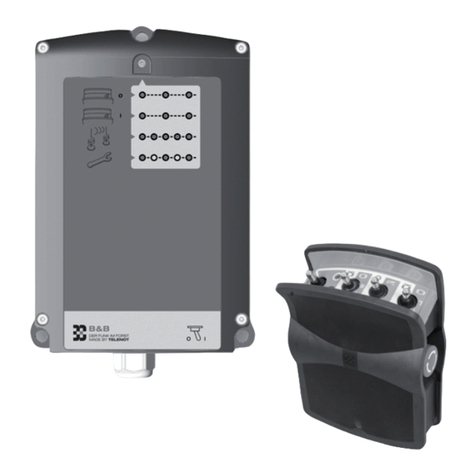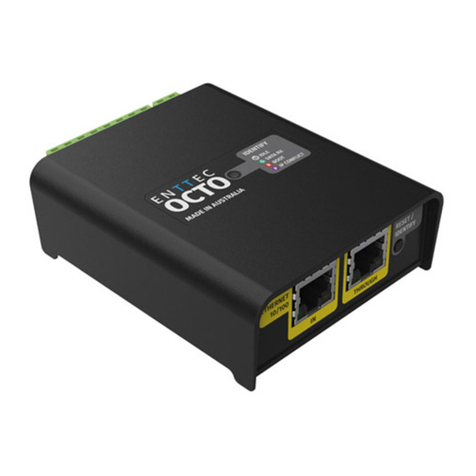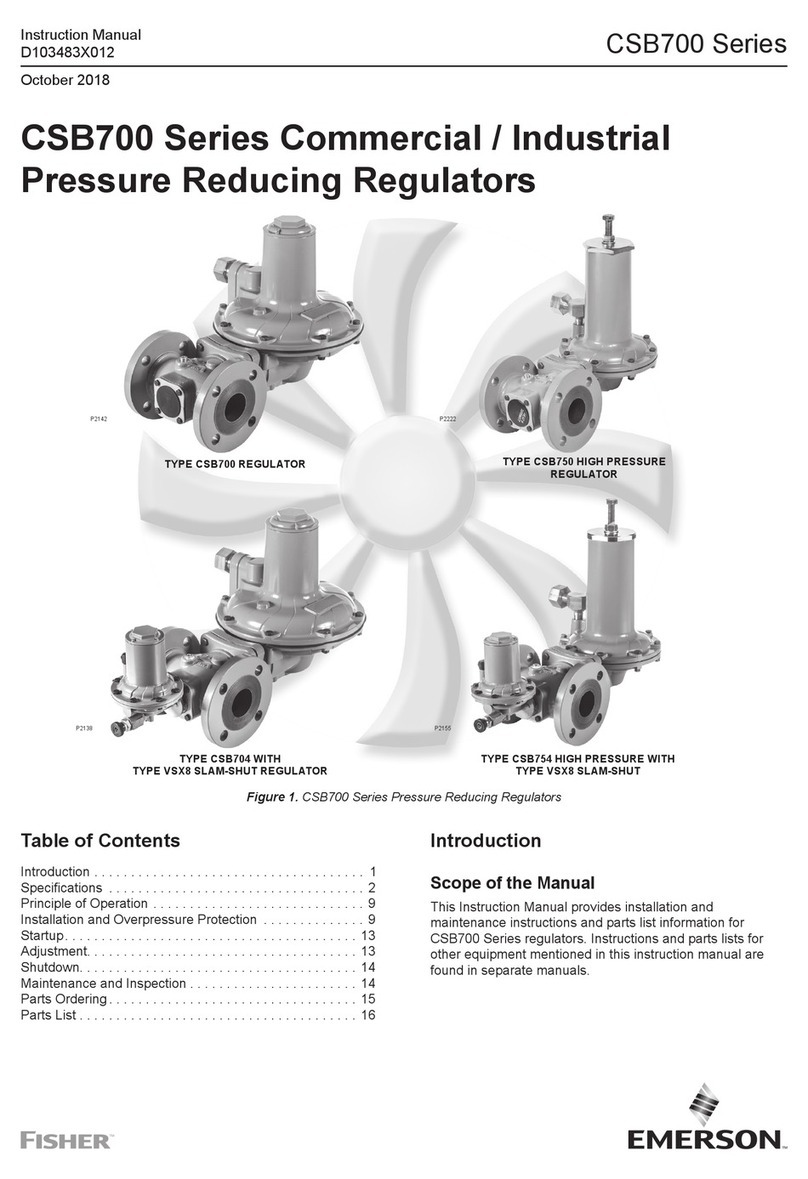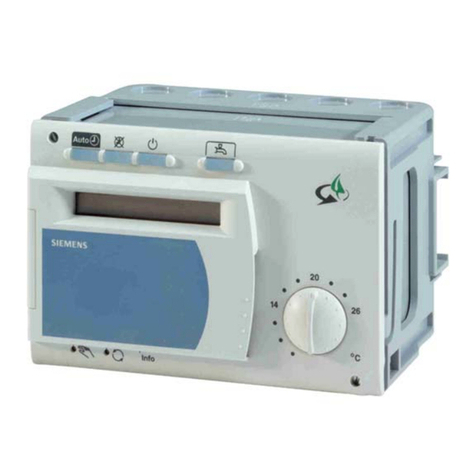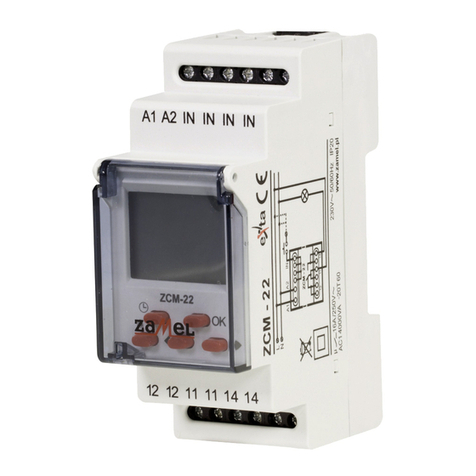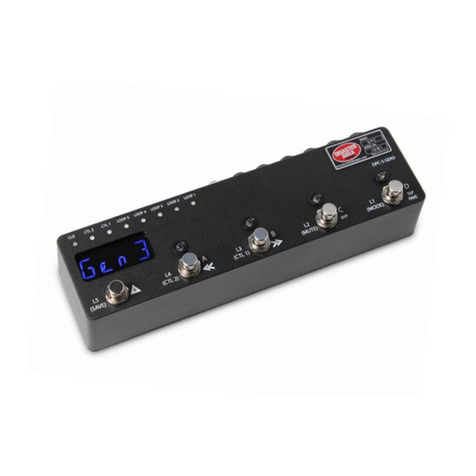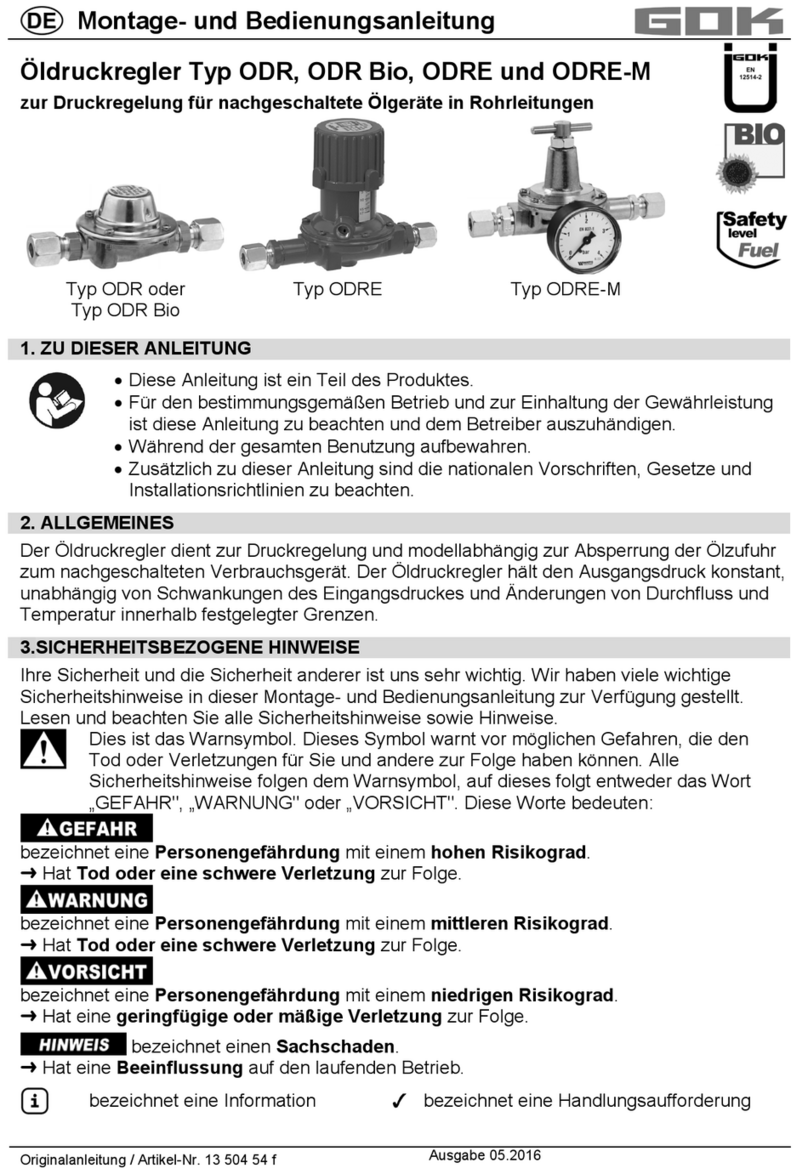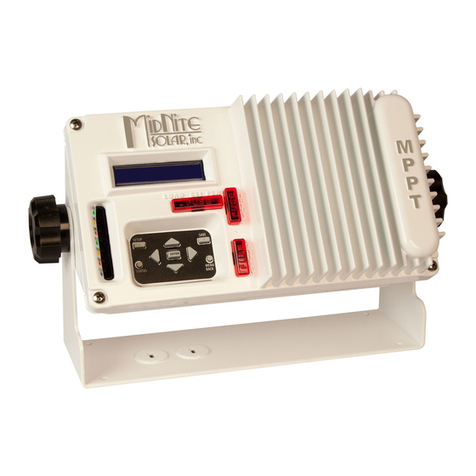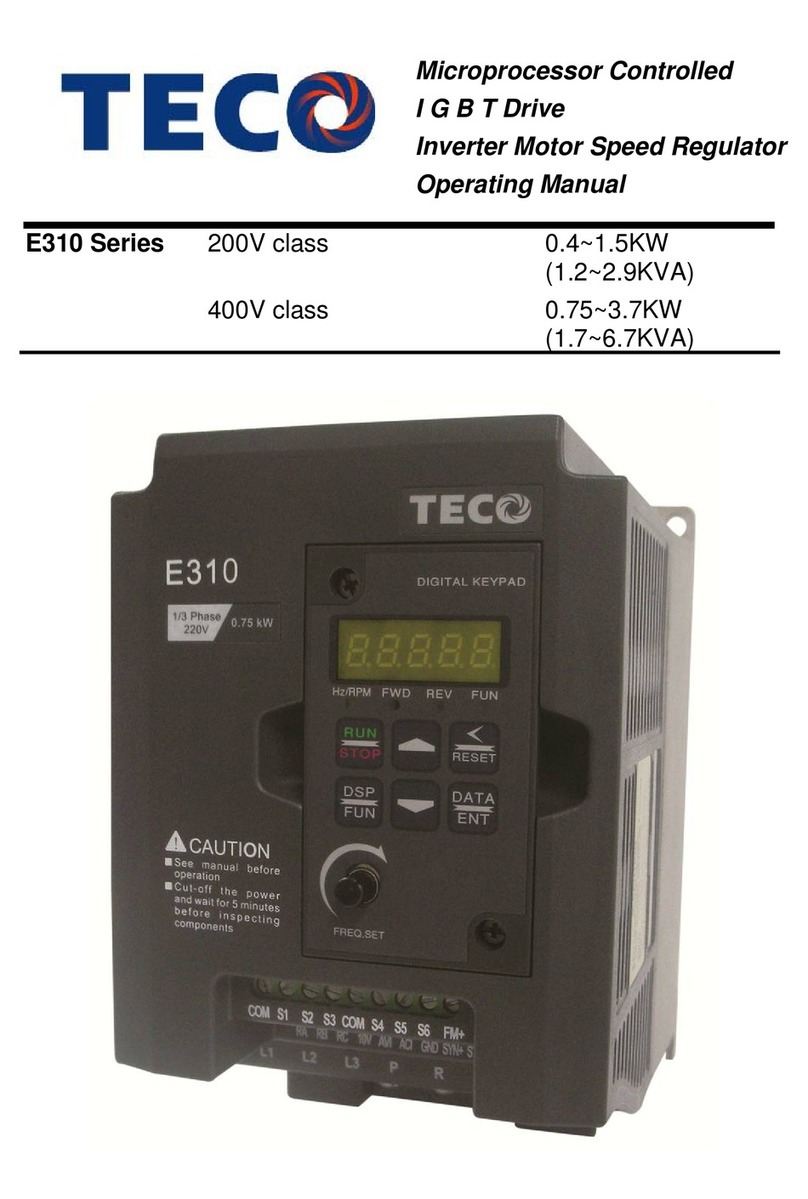Telenot B&B F6 User manual

WIRELESS CONTROL
FOR FOREST WINCHES
F6
Version (02) OPERATING INSTRUCTIONS english

2
TELENOT ELECTRONIC GMBH
B & B Product Division
Wiesentalstraße 42
73434 AALEN
GERMANY
Tel. +49 7361 946-4813
Fax +49 7361 946-440
E-Mail: service@forest-frequency.com
Internet: http://www.forest-frequency.com
Translation of the German original operating instructions

3
User notes
1 User notes
These operating instructions enable you to use the radio control
for forest winches F6 safely and efficiently.
All stated safety notices and instructions must be observed to
ensure safe working. Furthermore, the local accident prevention
regulations and general safety regulations for the system's area
of use apply.
Illustrations are intended to help you understand the content in
general, and may deviate from the actual design.
Target group
These operating instructions are written for forestry contractors,
private forestry owners and firewood self-harvesters.
Contents
These operating instructions include detailed explanations on
mounting, installation, parameterization, operation, mainte-
nance, and servicing of the radio control.
Use of the operating instructions
Read the complete operating instructions before putting the re-
mote control into operation, and store the operating instructions
in a suitable protective cover at the location of use so they can be
easily accessed.
Do not put the remote control into operation before you have
familiarized yourself with the points of the operating instructions
that are relevant to the purpose for which you intend to use it. In
this way you can prevent errors when operating the system.
Correct use of the product
The radio control provides for convenient and safe remote control
of forest winches. It replaces the wired control of the cable winch.
All common winch types are suitable.

4
User notes
General Sales Terms
You can find the General Sales Terms at the TELENOT website at
http://www.telenot.com and in the TELENOT product catalog.
Return faulty devices
To avoid damages during transport, choose stable and robust
packaging (the original packaging, if possible) and, where
appropriate, protective packaging and a box for shipping. Take
into account the weight of the housing, boards, etc. and protect
package contents from shifting. Also protect from the electrosta-
tic discharge ESD. Enclose an error description with the device.
Limitation of liability
All technical information in this description has been written
by TELENOT with the utmost care. Nevertheless, errors cannot
be totally excluded. We draw your attention to the fact that we
do not assume any legal responsibility or any type of liability for
consequences that can be traced back to incorrect information.
On account of further product development, the design and
wiring of your product may differ from the information stated
in these instructions. We would be much obliged if you would
inform us of any errors.
We would like to draw your attention to the fact that the soft-
ware and hardware names and trademarks of the companies
included in the instructions are generally subject to trademark
or patent law.
The manufacturer assumes no liability for damages due to:
Non-observance of the Technical Description
Missuse
Use of non-trained personal
Unauthorized conversions
Technical modifications
Use of non-approved spare parts

5
User notes
Manufacturer
TELENOT ELECTRONIC GMBH
B & B Product Division
Wiesentalstraße 42
73434 AALEN
GERMANY
Tel. +49 7361 946-4813
Fax +49 7361 946-440
E-Mail: service@forest-frequency.com
Internet: http://www.forest-frequency.com
Product identification
For inquiries, complaints or parameterization requests, you
must specify the serial number of the device. Based on the serial
number, the manufacturer can identify every component. The
receiver identification can be found on the housing. The trans-
mitter identification is located on the rear of the transmitter on
the belt plate.
Using the serial number the manufacturer can identify every
component.
000000000000031
TELENOT ELECTRONIC GMBH
Wiesentalstraße 42
73434 Aalen
DEUTSCHLAND
Baujahr 2015
)6
434 MHz Band
Baujahr 2015
)XQNVHQGHU
000000000000031
Receiver specification plate
Tr
ansmitter specification plate
Serial number
Serial number
Radio control specification plate F6

6
User notes
Explanation of symbols
Safety notices are indicated thus:
hazard symbol, signal word, hazard type, and a description of
how to prevent the hazard. Different signal words are used
depending on the hazard degree.
DANGER!
Potentially hazardous situation that can lead to death or
very serious injuries.
WARNING!
Potentially hazardous situation that can lead to death or
serious injuries.
CAUTION!
Potentially hazardous situation that can lead to minor
or light injuries.
NOTICE!
Potentially hazardous situation that can lead to property
damage.
Component at risk of ESD (ESD = electrostatic discharge
(eng), elektrostatische Entladung (ger))
Important notice, order
NOISE!
Hearing damage due to noise!
Tips, recommendations, useful information
Disposal instruction
Instructions for disposal for hazardous batteries and
rechargeable batteries
Delivery
Accessories, useful add-ons for optimum product use
Parameterizable function
Legend
Sequence of action

7
Table of content
1 User notes . . . . . . . . . . . . . . . . . . . . . . . . . . . 3
2 Table of content . . . . . . . . . . . . . . . . . . . . . . .7
3 Safety notes. . . . . . . . . . . . . . . . . . . . . . . . . . 9
3.1 Responsibility of the owner of the system . . . . . . . 9
3.2 Responsibility of the user . . . . . . . . . . . . . . . . . . 9
3.3 Special risks . . . . . . . . . . . . . . . . . . . . . . . . . . 11
3.3.1 Defective control elements . . . . . . . . . . . . . . . 11
3.3.2 Noise . . . . . . . . . . . . . . . . . . . . . . . . . . . . . 11
3.3.3 Short circuit. . . . . . . . . . . . . . . . . . . . . . . . . 11
3.4 Transport, packaging materials and storage . . . . . 11
3.4.1 Safety notes for transport . . . . . . . . . . . . . . . . 11
3.4.2 Handling packaging materials . . . . . . . . . . . . . 12
3.4.3 Storage of packing pieces . . . . . . . . . . . . . . . . 12
3.5 Storing and handling the transmitter
rechargeable battery eneloop®¹ (optional) . . . . . . 12
3.6 Conduct in the event of danger and accidents . . . 13
4 Delivery . . . . . . . . . . . . . . . . . . . . . . . . . . . 14
5 System overview . . . . . . . . . . . . . . . . . . . . . . 15
6 Function overview . . . . . . . . . . . . . . . . . . . . . 16
6.1 Transmitter . . . . . . . . . . . . . . . . . . . . . . . . . . 16
6.2 Receiver . . . . . . . . . . . . . . . . . . . . . . . . . . . . 17
7 Device Features. . . . . . . . . . . . . . . . . . . . . . . 17
7.1 Radio control F6 . . . . . . . . . . . . . . . . . . . . . . . 17
7.2 General features . . . . . . . . . . . . . . . . . . . . . . . 18
7.3 Transmitter features . . . . . . . . . . . . . . . . . . . . 18
7.4 Receiver features . . . . . . . . . . . . . . . . . . . . . . 18
8 Functional Description . . . . . . . . . . . . . . . . . . 18
8.1 Structure . . . . . . . . . . . . . . . . . . . . . . . . . . . 18
8.1.1 Transmitter F6 S . . . . . . . . . . . . . . . . . . . . . . 18
8.1.2 F6 receiver. . . . . . . . . . . . . . . . . . . . . . . . . . 19
8.2 Functions . . . . . . . . . . . . . . . . . . . . . . . . . . . 20
8.2.1 Pull drum . . . . . . . . . . . . . . . . . . . . . . . . . . 20
8.2.2 Release brake . . . . . . . . . . . . . . . . . . . . . . . 20
8.2.3 Gas adjustment . . . . . . . . . . . . . . . . . . . . . . 21
8.2.4 Active emergency call function
("Active emergency") . . . . . . . . . . . . . . . . . . . 21
8.2.5 Changing the radio channel . . . . . . . . . . . . . . 23
9 Accessories . . . . . . . . . . . . . . . . . . . . . . . . . 24
10 Mechanical structure . . . . . . . . . . . . . . . . . . . 25
10.1 Transmitter F6 S . . . . . . . . . . . . . . . . . . . . . . . 25
10.2 Receiver F6 E . . . . . . . . . . . . . . . . . . . . . . . . . 25
11 Mounting . . . . . . . . . . . . . . . . . . . . . . . . . . 26
11.1 Transmitter F6 S . . . . . . . . . . . . . . . . . . . . . . . 26
11.1.1 Carrying on the body . . . . . . . . . . . . . . . . . . . 26
11.1.2 Mounting with bracket for transmitter . . . . . . . 27
11.2 Receiver F6 E . . . . . . . . . . . . . . . . . . . . . . . . . 27
11.2.1 Mounting location requirements . . . . . . . . . . . 27
11.2.2 Mounting of F6 E receiver . . . . . . . . . . . . . . . . 28
12 Connections and Interfaces . . . . . . . . . . . . . . . 29
12.1 Position . . . . . . . . . . . . . . . . . . . . . . . . . . . . 29
12.2 Connection type . . . . . . . . . . . . . . . . . . . . . . . 29
12.3 Connection configuration . . . . . . . . . . . . . . . . . 30
12.3.1 Socket 1 . . . . . . . . . . . . . . . . . . . . . . . . . . . 30
12.3.2 Socket 2 . . . . . . . . . . . . . . . . . . . . . . . . . . . 31
13 Installation . . . . . . . . . . . . . . . . . . . . . . . . . 32
14 Wiring diagrams . . . . . . . . . . . . . . . . . . . . . . 33
2 Table of content

8
Table of content
15 Parameterization. . . . . . . . . . . . . . . . . . . . . . 34
15.1 Who performs the parameterization? . . . . . . . . . 34
16 Commissioning . . . . . . . . . . . . . . . . . . . . . . . 34
16.1 Requirements . . . . . . . . . . . . . . . . . . . . . . . . 34
16.2 Preparation . . . . . . . . . . . . . . . . . . . . . . . . . . 34
16.2.1 Receiver connection. . . . . . . . . . . . . . . . . . . . 34
16.3.1 Fitting batteries/rechargeable batteries
in the transmitter . . . . . . . . . . . . . . . . . . . . . 35
16.3 Functional test . . . . . . . . . . . . . . . . . . . . . . . . 35
16.4 Fault-free operation. . . . . . . . . . . . . . . . . . . . . 36
16.4.1 Commissioning check list . . . . . . . . . . . . . . . . 37
17 Operation . . . . . . . . . . . . . . . . . . . . . . . . . . 38
16.5 Safety notices for operation . . . . . . . . . . . . . . . 38
17.1 Receiver F6 E . . . . . . . . . . . . . . . . . . . . . . . . . 40
17.2 Transmitter F6 S . . . . . . . . . . . . . . . . . . . . . . . 40
17.2.1 LED indications on the transmitter F6 S . . . . . . . 41
17.2.2 Release brake . . . . . . . . . . . . . . . . . . . . . . . 42
17.2.3 Permanent release . . . . . . . . . . . . . . . . . . . . 42
17.2.4 Pull drum . . . . . . . . . . . . . . . . . . . . . . . . . . 43
17.2.5 Gas+ . . . . . . . . . . . . . . . . . . . . . . . . . . . . . 43
17.2.6 Gas– . . . . . . . . . . . . . . . . . . . . . . . . . . . . . 44
17.2.7 Triggering "Activeemergency" . . . . . . . . . . . . . 44
17.2.8 Reset "Active emergency" . . . . . . . . . . . . . . . . 46
17.3 Eliminate fault states. . . . . . . . . . . . . . . . . . . . 47
18 Maintenance and service . . . . . . . . . . . . . . . . . 48
18.1 Recommended maintenance interval . . . . . . . . . 48
18.2 Scope of maintenance . . . . . . . . . . . . . . . . . . . 48
18.2.1 Cleaning the transmitter and receiver . . . . . . . . 49
18.2.2 Batteries . . . . . . . . . . . . . . . . . . . . . . . . . . . 49
18.2.3 Rechargeable batteries (optional) . . . . . . . . . . . 49
18.2.4 Changing fuses in the receiver F6 E . . . . . . . . . . 50
19 Disassembly and disposal . . . . . . . . . . . . . . . . 52
19.1 Decommissioning . . . . . . . . . . . . . . . . . . . . . . 52
19.2 Disassembling the receiver F6 E . . . . . . . . . . . . . 52
19.3 Disposal . . . . . . . . . . . . . . . . . . . . . . . . . . . . 52
20 Technical Data . . . . . . . . . . . . . . . . . . . . . . . 53
21 Declaration of conformity . . . . . . . . . . . . . . . . 55

9
Safety notes
3 Safety notes
The operating instructions provide important information for
handling the device. All stated safety notices and instructions
must be observed to ensure safe working.
3.1 Responsibility of the owner of the system
The receiver may only be connected by a specialist according
to the pin assignment diagram enclosed.
The radio control may only be operated in a technically per-
fect state. In the event of faults and defects that can impair
safety, the system must be switched off immediately and
repaired by a qualified professional.
If a radio control is used you must make sure that it does not
interfere with the other systems around it and it itself is not
interfered with by them.
Adjustment of speed from the radio control is only per-
missible if it can be guaranteed from a structural point of
view that the cable intake speed does not exceed 0.6m/s
and that the change in cable intake speed is not more than
20percent.
Conduct regular visual inspections to allow damaged cables,
plugs, and other equipment necessary to ensure safety to be
repaired prior to starting work.
People whose responsiveness is impaired by the influence of
medication, alcohol, or drugs may not put the radio control
into operation, operate, maintain, or repair it.
People carrying medical devices should check the compatibi-
lity of their devices with the radio control that is constructed
according to EN 62479.
3.2 Responsibility of the user
DANGER!
Danger from vehicles tipping over
Ensure that the required stability of the vehicle is
provided. Check the ground.
DANGER!
Danger from pulling up tree trunks
Do not touch the towing cable during operation!
Nobody should be located around the intake zone of the
cable winch!
DANGER!
Danger from tree trunks falling down
Keep a safe distance from the cable winch.

10
Safety notes
DANGER!
Danger from cutting off and restoration of the power
supply for the transmitter/receiver
Nobody should be located around the intake zone of the
cable winch!
Keep a safe distance from the cable winch.
Requirements for safe operation
Wear protective work clothing suitable for the activity and
the deployment location (PPA).
Before switching on the radio control, ensure that nobody
could be put at risk from operation.
Always work with a direct line of sight to the machine and
proceed with particular caution if you are not yet familiar
with operating the radio control.
When changing location, make sure that you do not acci-
dentally reverse the directions of movement of the cable.
To ensure that a work phase ends and consequently safe
conditions can be established on site in the highly unlikely
event of total failure of the battery, it is recommended that
you always carry two spare batteries and the manual con-
trol for the winch with you in the vehicle.
The stop and emergency call switch on the transmitter
only affects the winch and is not to be confused with the
machine's emergency-off.
Follow the instructions in the section "Maintenance".
Only use the radio control within the climatic, environmen-
tal conditions that are specified in the section "Technical
data".
In addition to generally applicable regulations for accident
prevention, the local regulations should also be observed.
DANGER!
Danger from unintentional triggering of functions or
starting up
Ensure that no unintended actuation of the transmitter
can be caused by items of clothing and similar items.
Switch the transmitter off during break times and at
the end of work and secure it against unauthorized
access (e.g. from children).
Make sure that the receiver is unplugged while driving.

11
Safety notes
3.3 Special risks
3.3.1 Defective control elements
CAUTION!
Residual risk!
Even if the operator follows the procedures correclty,
a residual risk still applies. Example: The operator
deactivates the "Pull" command. Due to a mechanical
blockage, however, the command continues to be
executed.
Keep an eye on your working environment at all times
so that you can react quickly and prudently even in
unexpected hazardous situations.
3.3.2 Noise
CAUTION!
Hearing damage due to noise!
When you are working in the vicinity of audible alarm
messages (> 85 dBA), wear hearing protection.
Remain in the vicinity of audible warning devices only
for as long as required.
3.3.3 Short circuit
WARNING!
Fire hazard from short circuits!
In the event of a short circuit, very high currents may
occur which could, for example, heat up plug connec-
tions and cables considerably. A fire could potentially
result.
The supply voltage of the receiver must be protected
with a 15 A fuse to prevent the risk of fire.
3.4 Transport, packaging materials and storage
3.4.1 Safety notes for transport
NOTICE!
In the case of incorrect transportation, substantial pro-
perty damage can arise.
Be careful when you unload the packing pieces or by
transporting them within your company premises.
Observe the symbols on the packaging.
Make sure that you are ready to start mounting before
you remove the packaging.
Inspection of delivery
When you receive the delivery, immediately check it for
completeness and transport damage.
If a delivery has transport damage that can be recognized
externally, do not accept the delivery – or if you accept the
delivery, do so under reservation only. Tender a complaint.

12
Safety notes
3.4.2 Handling packaging materials
Packaging materials are valuable raw materials which can often
be re-used or recycled.
Dispose of the packaging materials in an environmentally
friendly manner.
Observe the locally applicable waste disposal regulations.
Contract an expert company for disposal, if necessary.
DANGER!
Risk of suffocation and injury for children due to
packaging materials
Keep packaging materials away from children.
3.4.3 Storage of packing pieces
Store packing pieces under the following conditions:
Do not store in the open air.
Store in dry and dust-free conditions.
Do not expose to any aggressive media.
Protect from direct sunlight.
Avoid mechanical vibrations.
Storage temperature: see technical data
Relative humidity: see technical data
In the case of storage for longer than 3 months, inspect the
general state of all parts and packaging regularly. If neces-
sary, recondition or replace the packaging.
3.5 Storing and handling the transmitter rechar-
geable battery eneloop®¹ (optional)
Batteries gradually lose capacity with age and operating times
become shorter.
If handled properly, the lifetime of the battery is around 1,500
charge and discharge cycles. After further charging cycles and at
temperatures below 0°C the capacity can drop considerably.
Only recharge the battery when it is empty. If it is charged
after only a short period of operation, it shortens the service
life.
Do not charge the rechargeable battery at temperatures
below 0°C or above +40°C. The rechargeable battery
should preferably be charged within a temperature range of
+10°C to +30°C.
If the rechargeable battery has not been used for an exten-
ded period, charge it before using it.
The transmitter switches off automatically if it is not used for
longer than the parameterized time (e.g. 20minutes), or if the
rechargeable battery is discharged. This feature reliably prevents
harmful deep discharging.
¹ eneloop ® is a trademark of Panasonic (formerly of
Sanyo).
eneloop® battery technology enables up to 50 hrs of
continuous transmission without recharging; even
if – as occurs regularly in privately owned forests –
instances of use are separated by weeks or months.
eneloop® batteries only lose 15% of capacity per year
(as opposed to up to 100% in conventional quality
batteries)

13
Safety notes
CAUTION!
Incorrect use of rechargeable batteries can cause eye
injuries or property damage!
Only use the batteries in the devices that are intended for
them (battery technology and type).
Only charge the rechargeable batteries in charging devices
that have either been supplied or recommended by the
manufacturer.
Keep the unused batteries far away from metallic objects
which could cause bridging of the contacts.
Fluid can emerge from the battery in the event of incorrect
usage. Avoid contact with it. In the event of accidental con-
tact with the battery fluid, rinse with water. If battery fluid
gets in the eyes also seek medical attention.
In accordance with the battery ordinance, batteries
must not be disposed of with domestic waste!
Batteries purchased from TELENOT can be returned free
of charge, where they are disposed of properly.
3.6 Conduct in the event of danger and accidents
Preventive measures
You must always be prepared for the case of accidents or
fire.
Store the first-aid equipment (medical kit, blankets, etc.)
within easy reach.
Store the fire extinguisher within easy reach.
Make sure that personnel are familiar with accident notifi-
cation, first-aid, and rescue equipment.
Keep access routes for emergency rescue vehicles free.
In the event of problems: handle correctly!
Put the device out of operation immediately.
Rescue all persons from the danger zone.
Initiate first-aid measures.
Inform the authorized personell at the location of use.
Notify a doctor and/ or the fire department.
Clear access routes for rescue vehicles.

14
Delivery
4 Delivery
Art.-No. Name Delivery
109536040 Radio control F6 − Transmitter F6 S
− Receiver F6 E with connection cable and plug
− Pin assignment plan, valid for your winch
− Accessories kit with: 4 AA batteries, waist belt, 3runner-bonded metal buf-
fer for receiver, B&B ball-point pen
− Original operating instructions F6
− Translation of the original operating instructions in German language F6
into the language of the destination country
− Optional: 4 AA NiMH eneloop® rechargeable batteries, 230V rechargeable
battery charger
− Optional: Chest belt

15
System overview
5 System overview
The radio control F6 is used for wireless activation of cable
winches. The radio control F6 can be used to control single-drum
winches (ET) of all types.
Transmitter
Receiver
Winch
release brake /
pull drum
Gas
+/–
F6 E
F6 S
Overview: Connecting the F6 to a machine

16
Function overview
6 Function overview
The radio control F6 was developed specifically for the challen-
ging requirements in the forestry sector. The high-quality radio
electronics in a robust housing make the F6 an ideal controller
for professional skidding and pulling work.
The radio control is suitable for use on forestry vehicles with
permanently attached cable winches and for 3-point cable
winches on agricultural tractors.
6.1 Transmitter
Transmitter F6 S
The transmitter is small, light and easy to handle and you can
carry it conveniently on your waist, midriff or chest (optional).
The ergonomic design of the operating panel allows for fatigue-
free working and safe operation, also if you are wearing gloves.
The electronics are housed in a rubber-reinforced enclosure
made of glass fiber-reinforced polyamide and protected against
the penetration of dust and water jets (protection class IP65).
The antenna is integrated in the housing. The control ele-
ments are surrounded by a protective collar that is capable of
withstanding high mechanical loads. Full batteries or charged
rechargeable batteries (optional) provide sufficient power for
50hours of continuous transmission in normal operation mode.

17
Device Features
The receiver has its own diagnostics LED which indicates the
status of important output functions and system messages by
lighting up in a specific color (red, green, orange) and a specific
blink rhythm. This permits rapid on-site assessment of the status
of the radio control.
The receiver electronics are contained in a robust polyamide
housing and protected against dust and water jets (protection
toIP65).
6.2 Receiver
Diagnostics LED
Receiver F6 E
7 Device Features
7.1 Radio control F6
Radio control F6
Ready-to-operate set F6 for single-drum winches
Functions:
Pull
Brief and permanent brake release
Gas +/–

18
Functional Description
7.2 General features
Operationally safe function on the 70-cm ISM band
Bidirectional radio technology
3 working channels
Individual adjustments to the special circumstances and
types of operation of a wide range of winch operating modes.
Operating temperature –20°C to +60°C
7.3 Transmitter features
Ergonomically designed operation panel
Robust, glass fiber-reinforced housing with surrounding
protective rubber edges
High-quality membrane keypad for long service life
Stop and emergency switch with active emergency call
function
Energy-saving battery concept (2 AA batteries fitted, 2 spare
AA batteries) for 50 hours of operation with full batteries or
charged rechargeable batteries (optional)
eneloop® AA exchangeable replaceable battery system
(optional)
Protection type IP65
Dimensions (W x H x D) 116 x 161 x 61 mm
Weight approx. 600 g with batteries/rechargeable batteries
(without belt)
7.4 Receiver features
Shock-proof housing made from PC/ABS polyamide
Diagnostics LED
Protection type IP65
Dimensions (W x H x D) 152 x 218 x 51/66 mm
Operating voltage +10V to +30V DC
Weight approx. 670 g
8 Functional Description
8.1 Structure
8.1.1 Transmitter F6 S
Operating possibilities for transmitter F6 S
Button 1
− Pull drum
Button 2
− Release brakes (brief)
− Permanent release (long)
Button 3
− Gas+
Button 4
− Gas–
Button 5
− Switch on
Button 6
− Switch off
Details: See operation

19
Functional Description
8.1.2 F6 receiver
Display F6 receiver
Diagnostics LED (red, green, orange)
Diagnostics LED flashing red:
Transmitter is switched off
Diagnostics LED flashing green:
Transmitter is switched on
Diagnostics LED blinking green:
radio reception active (com-
mand is received)
Diagnostics LED blink sequence red, orange:
- Siren monitoring has triggered
--> Check fuse Si5 and supply line to the siren
Diagnostics LED blink sequence red, red, orange, orange:
- Monitoring of relay outputs has triggered
--> Check main fuse Si1 and relay outputs
Diagnostics LED blink sequence red, red, red, orange,
orange, orange:
- Device malfunction
--> Contact service
What to do in case of a device malfunction
In the case of an error in the safety critical function or
the internal self-monitoring function, you must cease
operation of the system immediately!
The system must be sent in to the factory for repairs. To
specify faults please use the form enclosed. A corres-
ponding response form is available for download on our
website at http://www.funk-im-forst.de/service.
All outputs except for "EMERGENCY" are monitored for
proper functioning or short circuits and in case of errors
the diagnostics LED will give indications. The "siren"
output is not monitored on delivery, but can be parame-
terized for being monitored.
Do not apply any voltage to the outputs!

20
Functional Description
8.2 Functions
8.2.1 Pull drum
To start the "Pull drum" function (cable intake by the
winch), press and hold the button and release the but-
ton to stop the function (jog mode).
8.2.2 Release brake
To start the "Release brake" function (release brake on
the winch), press and hold the button and release the
button to stop the function (jog mode).
Permanent release
If you hold down the button for longer (longer than the permanent
release time parametrized at the factory), the brake is permanently
released until you press the button again (release brake or pull
drum).
If the transmitter is not operated for longer than the parame-
terized stand-by time (factory setting 20 min.), the "permanent
release" function is automatically exited and the brake is applied
again.
The following functions are parametrized at the factory (depen-
ding on winch type):
Single functions (EF):
With the "Pull drum" command only the output "Pull drum" is
activated. The brake of the winch releases automatically.
Dual function (DF):
Activating the "Pull drum" command also activates the "Release
brake" command.
Depending on the winch type, the operating mode and time for
permanent release are parameterized at the factory:
Winch type Operation mode
Single function (EF) /
dual function (DF)
Duration of per-
manent release
AMR/BGU/
Uniforest
EF 3.5s
Farmi EF 1.5 s
Fransgard EF 3.5s
GVS DF 1.5s
Holzknecht EF 1.5s
Igland DF 1.5s
KMB EF 3.5s
Krpan/Oehler EF 3.5s
Maxwald EF 1.5s
Pfanzelt DF 1.5s
Ritter (old) DF 1.5 s
Ritter KWF DF 1.5s
S&R DF 1.5s
Tajfun EF 3.5 s
Werner/
Glogger
DF 1.5s
Table of contents
Other Telenot Controllers manuals
Popular Controllers manuals by other brands

Mitsubishi Electric
Mitsubishi Electric LCPU-U-HW Safety Guidelines
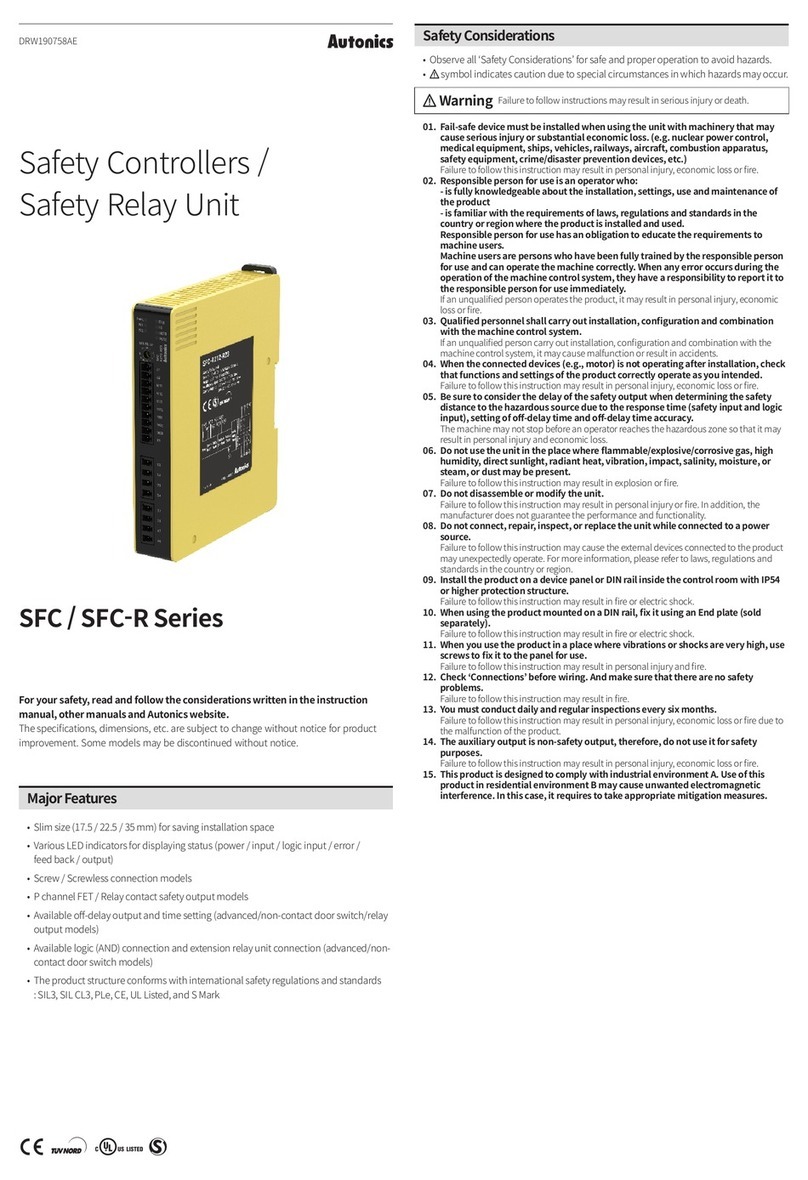
Autonics
Autonics SFC-R Series manual
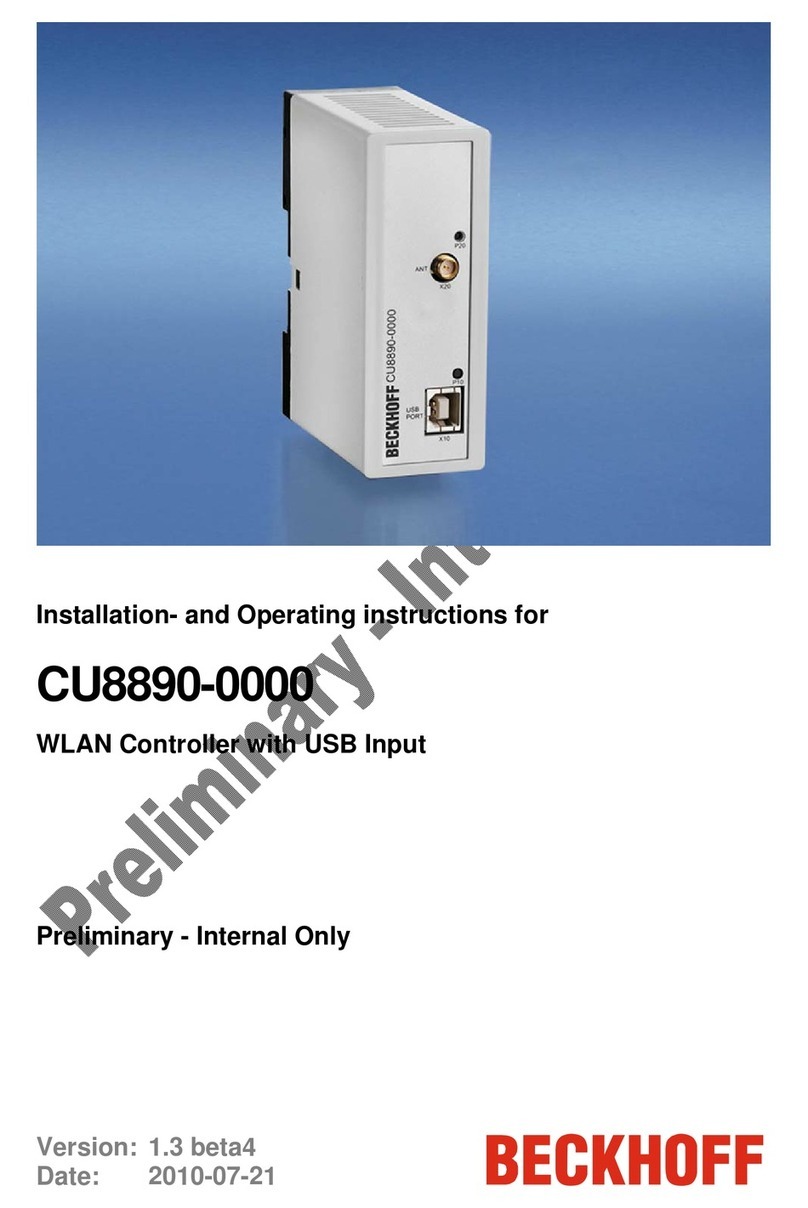
Beckhoff
Beckhoff CU8890-0000 Installation and operating instructions
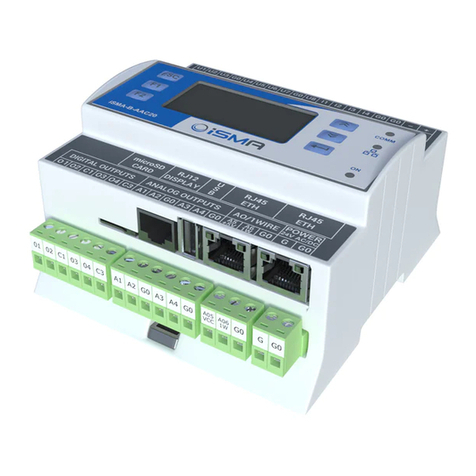
iSMA
iSMA iSMA-B-AAC20 user manual
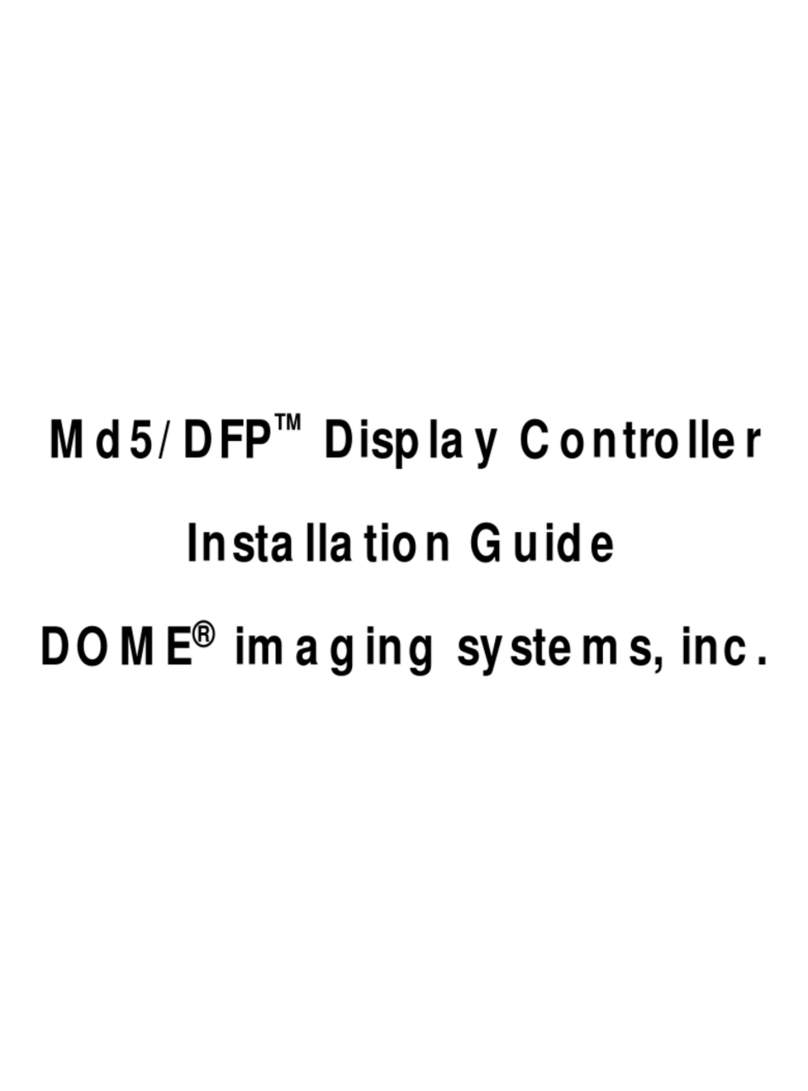
Planar
Planar DOME Md5/DFP installation guide

Calpeda
Calpeda IDROMAT 3 Original operating instructions
